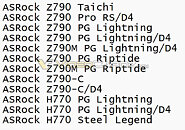For those wondering what happened to the Intel 12VO standard for motherboards, well, it's not dead, but it seems like the motherboard makers have chosen to largely ignore it. However, MSI has just launched a new 12VO motherboard, the PRO H610M 12VO, which is as the model name implies, a H610 based mATX motherboard. MSI is targeting the PRO H610M 12VO towards business computers and it's not hard to see why once you take a closer look at the specs. This is a bare minimum board in every aspect possible, with the chipset covered by the smallest of heatsinks and the VRMs getting none at all.
The board has a mere two DDR5 memory slots, one PCIe 3.0 x4 M.2 slot for an NVMe drive, a single x16 PCIe 4.0 slot and a x1 PCIe 3.0 slot, as well as a second M.2 slot for an optional CNVi or PCIe based Wi-Fi module. There's also four SATA ports, an Intel based Gigabit Ethernet port, two rear USB 3.0 ports, four USB 2.0 ports, a PS/2 port and three audio jacks via an ageing Realtek ALC897 audio chip. Rather unusually for a budget board, MSI went with a DisplayPort 1.4 and an HDMI 2.1 port, although both are limited to 4K 60p output and there's also a VGA port, just in case. MSI only appears to provide one power adapter for SATA drives, which seems to be limited to two SATA power connectors, although there's a second connector on the board, for a second SATA power cable. Overall, not a particularly impressive product, but it does at least keep Intel's 12VO platform alive for another day.





























































